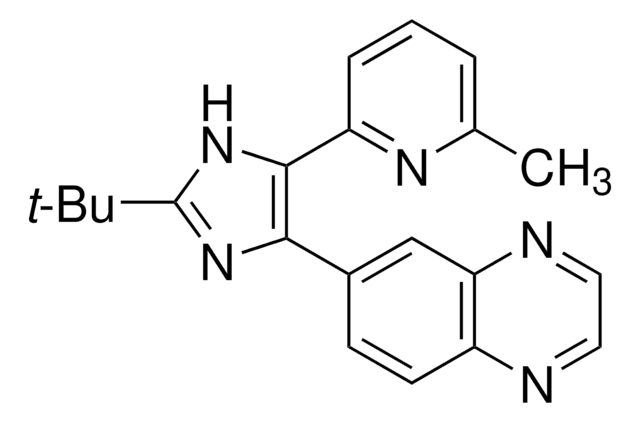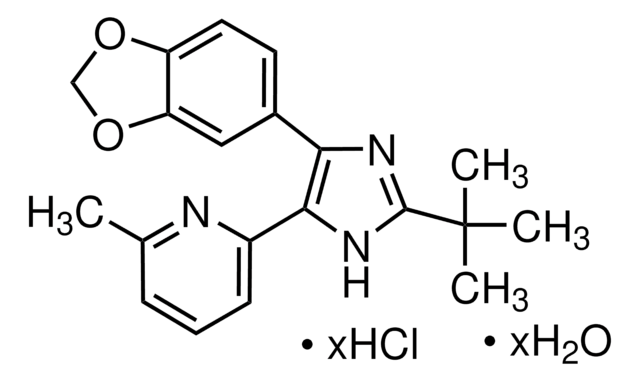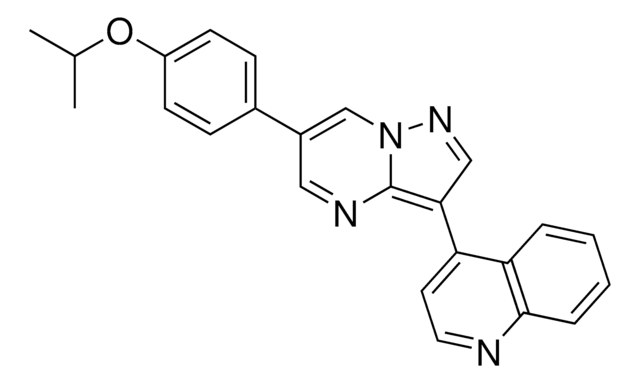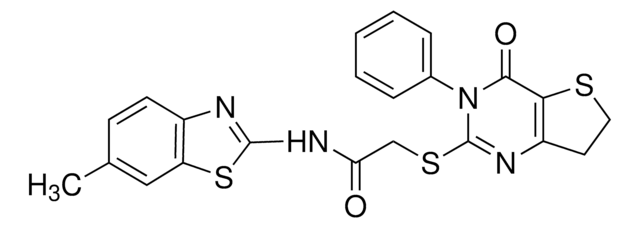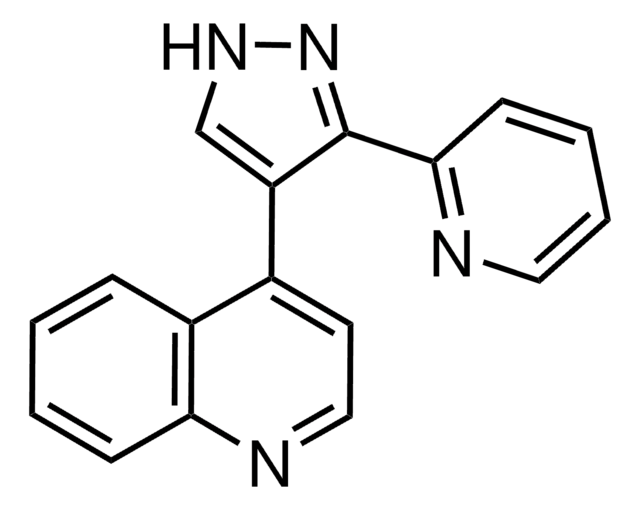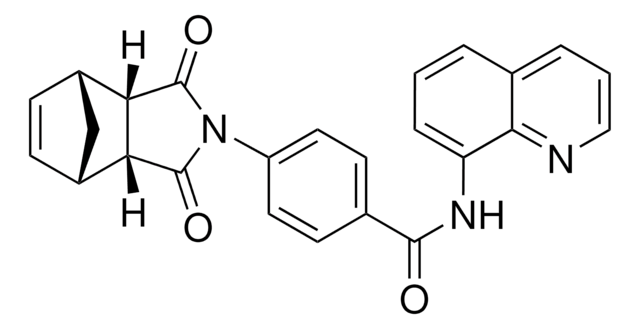616461
TGF-β RI Kinase Inhibitor VI, SB431542
TGF-β RI Kinase Inhibitor VI, SB431542, CAS 301836-41-9, is a cell-permeable inhibitor of SMAD2 phosphorylation. Inhibits the activity of ALK4 and ALK5 (IC₅₀ = 140 nM and 94 nM, respectively).
別名:
TGF-β RI Kinase Inhibitor VI, SB431542, 4-[4-(3,4-Methylenedioxyphenyl)-5-(2-pyridyl)-1H-imidazol-2-yl]benzamide, Dihydrate, 4-[4-(1,3-Benzodioxol-5-yl)-5-(2-pyridyl)-1H-imidazol-2-yl]benzamide, Dihydrate, SB-431542
About This Item
おすすめの製品
品質水準
アッセイ
≥97% (HPLC)
形状
solid
メーカー/製品名
Calbiochem®
保管条件
OK to freeze
protect from light
色
off-white
溶解性
ethanol: 10 mg/mL
DMSO: 100 mg/mL
輸送温度
ambient
保管温度
2-8°C
InChI
1S/C22H16N4O3/c23-21(27)13-4-6-14(7-5-13)22-25-19(20(26-22)16-3-1-2-10-24-16)15-8-9-17-18(11-15)29-12-28-17/h1-11H,12H2,(H2,23,27)(H,25,26)
InChI Key
FHYUGAJXYORMHI-UHFFFAOYSA-N
詳細
包装
警告
法的情報
保管分類コード
11 - Combustible Solids
WGK
WGK 3
引火点(°F)
Not applicable
引火点(℃)
Not applicable
適用法令
試験研究用途を考慮した関連法令を主に挙げております。化学物質以外については、一部の情報のみ提供しています。 製品を安全かつ合法的に使用することは、使用者の義務です。最新情報により修正される場合があります。WEBの反映には時間を要することがあるため、適宜SDSをご参照ください。
Jan Code
616461-5MG:
616461-MG:
616461-100MG:
試験成績書(COA)
製品のロット番号・バッチ番号を入力して、試験成績書(COA) を検索できます。ロット番号・バッチ番号は、製品ラベルに「Lot」または「Batch」に続いて記載されています。
この製品を見ている人はこちらもチェック
ライフサイエンス、有機合成、材料科学、クロマトグラフィー、分析など、あらゆる分野の研究に経験のあるメンバーがおります。.
製品に関するお問い合わせはこちら(テクニカルサービス)
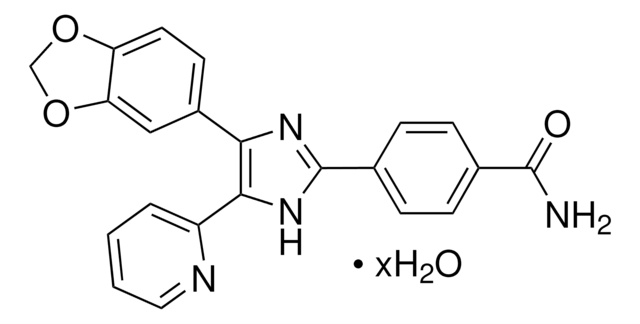
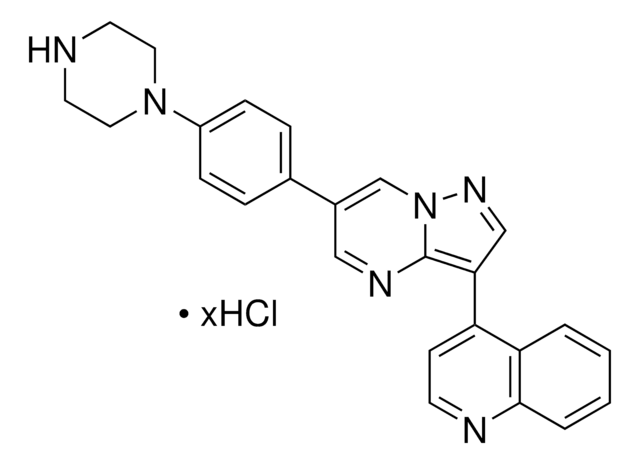
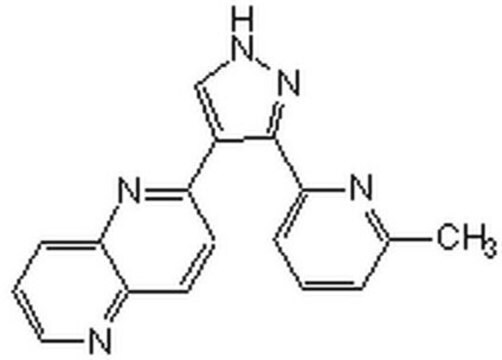
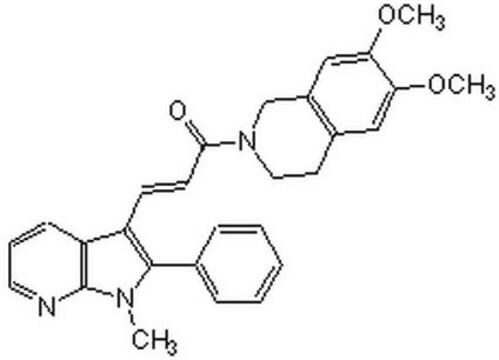

![6-[4-(2-ピペリジン-1-イルエトキシ)フェニル]-3-ピリジン-4-イルピラゾロ[1,5-a]ピリミジン ≥98% (HPLC)](/deepweb/assets/sigmaaldrich/product/structures/337/374/32fd5b47-5df0-4380-8347-33475bc58d2f/640/32fd5b47-5df0-4380-8347-33475bc58d2f.png)
